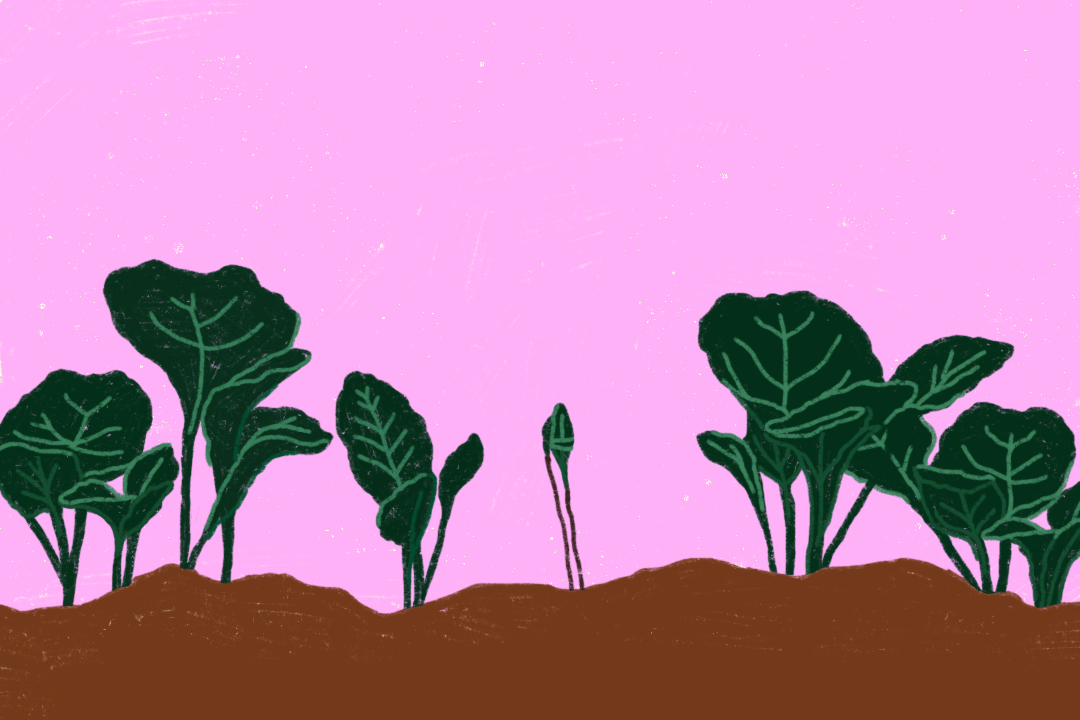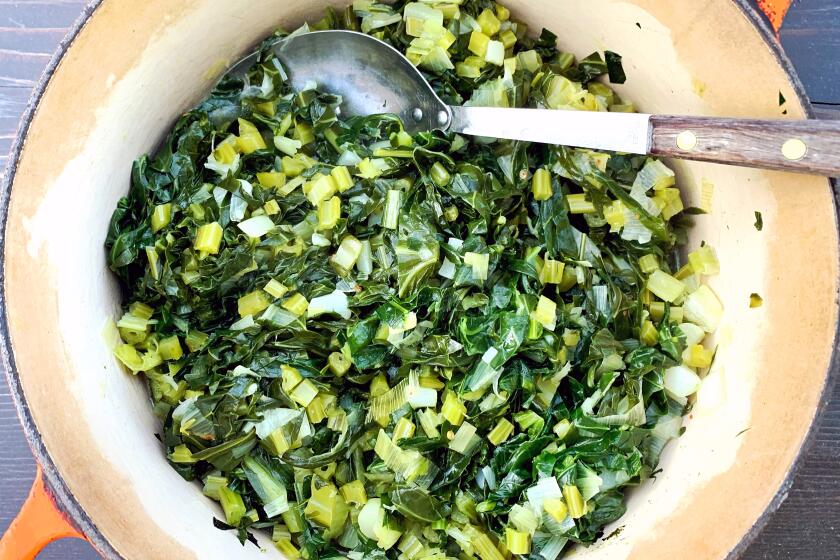Collards: The easiest greens to grow, cook and eat

Collard greens carried me and chef Carla Hall through our road trip from Charleston, S.C., to Nashville. At every pit stop, we ordered — and devoured — silky greens swimming in pot likker, the vegetables’ braising liquid aromatic with onion and garlic and often rich with ham hocks. At every farm stop, we walked along rows of collards’ broad fanning leaves. (Full disclosure: We were working on a cookbook together.)
Inspired by that Southern road trip, I decided to plant a bed of collards. I was encouraged by advice from Los Angeles-based urban gardener and community leader Ron Finley, who said, “Nothing’s easier to grow than collards.” He was right. They sprouted from seed almost effortlessly.
When I harvested them, I decided to cook the stems too, tossing the woodiest parts in the compost bin and starting the thinly sliced bendy stems in the pan before the leaves went in. That gave them enough time to lose their toughness, but still retain a nice crunch.
Collards end up nearly sweet after a long simmer. To capture that taste without keeping them on the stove forever, I cook leeks and garlic along with the stems. They caramelize in the process and are balanced by a hit of hot sauce stirred in at the end.
Greens are often served as a side dish to barbecued ribs, fried chicken and pulled pork. They’re delicious as a vegan main dish with cornbread, rice and beans, or biscuits, and any leftovers make a great addition to scrambled eggs the next day.
Sauteed Collard Greens
More to Read
Eat your way across L.A.
Get our weekly Tasting Notes newsletter for reviews, news and more.
You may occasionally receive promotional content from the Los Angeles Times.











